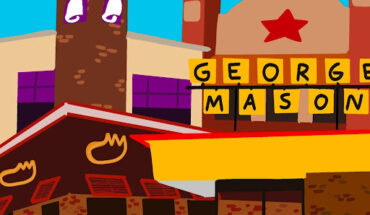BY: DOMINIC PINO, OPINION EDITOR
Railfans are a wonderful subculture. They’re train lovers: people who can tell you what year a train was built by looking at it, photographers who travel the country chasing their subjects, historians who can tell you any number of things about the development of railroads. I’m not one of them, but I’m sympathetic. Call me railfan-curious.
Railfans are not the only train enthusiasts however. There are also what I will call the high-speed rail proselytizers. Unlike railfans, who have the good sense as a subculture to mind their own business, the high-speed rail proselytizers jump at any chance to tell you why America is an awful country because it doesn’t have a better passenger rail system — especially on Twitter. “Look at Japan!” they say. Or, “Let’s join the other developed countries and stop lagging behind.” When they’re really feeling it, they trot out this one: “Why can’t we be more like Europe?”
Just like other proselytizers, these people are annoying.
There are a plethora of reasons that high-speed rail doesn’t make a whole lot of sense in the U.S. The most important is geography. A high-speed rail network is not a question of how developed a country is. If it were, in addition to Europe and Japan, we’d expect to see high-speed rail in places like Australia and Canada, which have a combined total of zero routes. Why? Because they aren’t very densely populated.
Imagine going to the Metro station in Vienna, getting on the Orange Line train to New Carrollton and actually riding it all the way to New Carrollton. Nobody expects you to do that because the route is densely populated. Other paying customers are going to take your spot when you get off.
On a bigger scale, consider the Tokaido Shinkansen, in Japan. It’s the oldest high-speed railway in the world, and it makes perfect sense. Its 320-mile route starts in Tokyo (population 8.6 million), passes through Yokohama (population 3.7 million), Hamamatsu (population 800,000), Nagoya (population 2.3 million), and Kyoto (population 1.5 million), and terminates in Osaka (population 2.7 million). So many chances for customers to get on and off along the way.
There’s only one part of the United States even slightly similarly populated: the Northeast Corridor between Washington, D.C. and Boston, which also happens to boast the only high-speed rail line in the country. The rest of America looks like Canada or Australia, population-wise: big cities separated by vast open spaces.
On a hypothetical train from Cleveland to Indianapolis, which are about 320 miles apart just like Tokyo and Osaka, you’d pass through Elyria (population 55,000), Lima (population 39,000) and Muncie (population 70,000) — and those are some of the biggest towns along the way.
It’s easy, you might think, just eliminate the stops and connect the cities directly. But that’s not how it works. Put yourself in the Mayor of Lima’s shoes. A railroad calls you on the phone and says it wants to go through Lima to connect Indianapolis and Cleveland. There’s got to be something in it for you; you don’t just want trains flying through your town all the time. So you demand a train station in Lima. Lima isn’t going anywhere, and the train needs to get through, so the railroad doesn’t have much of a choice but to agree.
Same story with every mayor in every town, village, borough and hamlet along the way.
It’s just not practical. We have highways and airplanes, just like Australia and Canada. Rail had its time in the limelight. The late 1800s and early 1900s were the railroad age in the U.S. We moved on. The railfans maintain that legacy as a subculture. Let’s keep it that way.
Consider a different subculture: Civil War reenactors. It’s one thing to form a community to reenact battles, learn about history, make neat costumes and immerse yourself in a bygone era. It’s quite another to want the whole country to play along to reenact the whole Civil War.
The high-speed rail proselytizers are doing the equivalent of the latter. They need to join the railfans. There’s nothing wrong with thinking trains are cool, but be a good member of a subculture and leave the rest of us alone.




